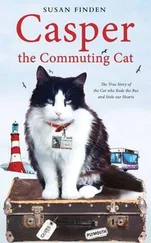The local Inuit were not much used to white visitors, and the new arrival turned the little settlement of Inukjuak upside down. No one knew quite how to place Robert Flaherty. His particular brand of whirlwind energy was new to them. Nor had they ever come across a qalunaat , a white man, with such sturdy warmth and rushing good humour. The fur traders they had encountered were glum and troubled and fond friends of the whisky bottle. News of the stranger spread, and the Inukjuamiut, as the people living around Inukjuak are called, began coming in from outlying camps to inspect this new addition to their world. Flaherty greeted them all with smiles and gifts of ship's biscuits and this, too, felt out of the ordinary. A few wondered, darkly, what the strange qalunaat wanted from them and drifted back out to their camps, but more stayed on, intrigued by the stranger and eager to audition for a part in the movie he said he was about to make.
Flaherty was soon holding try-outs on the river bank in front of the fur post manager's cabin. To play his leading man he picked a strong, good-natured fellow in his thirties called Alakariallak, who was renowned throughout Cape Dufferin for his hunting prowess. Flaherty renamed him Nanook, meaning ‘bear’. To play one of Nanook's wives Flaherty chose a local woman called Cunayou, to play the other, Maggie Nujarluktuk.
This was not Robert Flaherty's first attempt at making an Arctic film, but it was almost certainly his last chance to get it right. A few years later, when he had become famous, a journalist asked him why he had persisted back then, after so many setbacks and difficulties, and he replied, as he often did, with an aphorism, saying that ‘every man is strong enough for the work on which his life depends’. In 1920 Robert Flaherty believed his life depended on this movie. And, as it turned out, he was right.
Flaherty had first pitched up in the Canadian Arctic ten years previously, looking for iron ore, in the employ of Sir William Mackenzie, a Canadian mine owner and railroad baron whom Flaherty had met through his father. Mackenzie had invested considerable capital in a transcontinental railway across Canada and he was planning to lay track as far north as Churchill, Manitoba, a bleak Barrenlands settlement on the west coast of Hudson Bay. Mackenzie's goal was to link the railway with a new shipping route across the bay and thereby create the shortest navigation between the wheat plains of Manitoba and the flour mills of Europe, which were then connected overland and by sea through the St Lawrence River to the Atlantic. There were additional benefits, which Mackenzie, being a good businessman, had not ignored. It was well known that Hudson Bay's seabed was rich in iron ore – for centuries whalers had reported compass interference whenever they sailed there – and some enormous iron ore lodes had been discovered on the east coast of the Bay in the Ungava Peninsula just north of Labrador. Mackenzie reckoned there might be money to be made extracting the ore and shipping it to Europe.
His geologic interest focused on the Nastapoka Islands, a cluster of granite nubs lying just off the east coast of Hudson Bay at 57° North. The Nastapokas had figured in some prospectors' logs as being worthy of exploration. Inuit had been living in the area for thousands of years but the place was only scantily mapped and virtually unknown to white men. Mackenzie needed someone young and ambitious with courage and flare, even a little recklessness, to blaze a route through. In 1910 he chose Robert Flaherty. The railroad baron had employed Flaherty's father, Robert Flaherty Snr, and knew the family from the old days, when the American frontier was still open and the Flaherty family had helped to settle it. At 26, Robert Jnr already had a reputation for adventurous prospecting in the northern forests of Canada and although he had had no direct experience of the Barrenlands, Mackenzie felt inclined to take the risk on him.
The Flahertys had come over from Ireland sometime during or just after the potato famine and, travelling south from Quebec, they had settled in the tough mining country of Michigan. There Robert Jnr's father, Robert Henry Flaherty, had met and married Susan Klöckner, the daughter of Catholics from Koblenz. Robert Henry had done well for himself, buying up a modest little mine at the foot of Iron Mountain, Michigan, where Robert Joseph was born, on 16 February 1884, the first of seven children.
The family lived a comfortable upper-middle-class life. Robert Jnr grew up with a love for the outdoors and a disdain for civilisation which was remarkable even among boys living in the wilds of Michigan. This untroubled existence came to a sudden end, though, in 1893, when the price of iron ore slumped and Robert Snr was forced to lock out the miners at his Iron Mountain operation and later, when things did not improve, to close the mine down altogether. Of necessity, he took up a position as a mining engineer in the tiny backwater of Lake of the Woods in upper Ontario, leaving his wife to bring up their children alone.
Susan Klöckner was a loving, devout and uneducated woman and she did her best to raise Robert Joseph in the fear of God, but none of her sermonising appeared to have the slightest effect on her eldest son. If there was a god in Robert Flaherty's life he was to be found in the woods with the bears.
So the boy grew up wild, and when Robert Henry returned to Michigan his son begged to go with him on his next posting to a remote outpost, the Golden Star Mine in Rainy Lake, Ontario. It was a Huckleberry Finn kind of a life and Robert Jnr took to it like a trout to tickling. For two years father and son camped out in the woods, hunting rabbits, tracking bear and learning woodcraft from the local Ojibwa Indians. During the long winter nights, the boy lost himself in the adventure stories of James Fenimore Cooper and R. M. Ballantyne and in the long summer evenings Robert Snr taught his son to play the Irish fiddle. Robert Jnr learned some sharper lessons from the Ojibwa too. Years before, miners and fur trappers had brought booze and misery into the lives of the Indians living in northern Ontario. The sight of strong, capable men staggering around begging moonshine off the miners crept across the young Robert's tender heart like a shadow. If this was what men called civilisation, then he wanted no part of it.
When Robert Snr's two years in Rainy Lake were up, the Flaherty family moved on again, to the Burleigh Mine back near Lake of the Woods. Deciding their son needed some formal education, Susan and Robert Henry dispatched Robert Jnr to Upper Canada College in Toronto. The college was run with the rigid discipline of an English public school. It was intended to whip the boy into shape, but only made a square hole for a round peg. Robert Jnr soon contrived to get himself expelled, returning to Port Arthur (now Thunder Bay) on Lake Superior, where the Flaherty family were then living and enrolling in the local school. Even there Robert Jnr chafed against any kind of formal instruction, preferring instead to spend most of his time with the English mining engineer and adventurer, H. E. Knobel, who encouraged the boy's fiddle playing as well as his fantasies.
It was through Knobel that Flaherty first heard tell of Hudson Bay, a remote seaway bitten out of the eastern Canadian mainland. Knobel had been canoeing there and had stories to tell of the rapids he had paddled, the portages he had passed and the Indians and Inuit he had met on the way. The young Robert was so taken with Knobel's stories of adventure in remote places that, after a final and brief flirtation with book learning at Michigan College of Mines, he gave up formal education altogether and went north, into the woods to prospect for ore, hoping, one day, to travel as far as Hudson Bay. When, in 1910, Sir William Mackenzie asked him to lead an expedition to the Nastapokas, Robert Jnr felt his destiny calling. He did not hesitate.
Читать дальше












